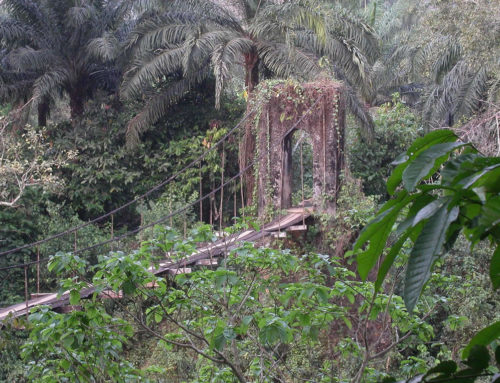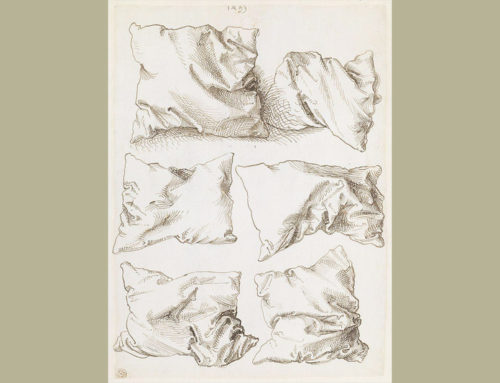The film “Africa Mia” (2019)
Directed by Richard Minier and Edouard Salier, explores the musical connections between Cuba and Mali.
It is a marvelous story.
In 1963, ten young aspiring musicians (all men and just barely out of their teenage years) are selected to represent their country—the Republic of Mali—as exchange students at the prestigious Alejandro García Caturla Conservatory in Havana, Cuba. Their studies are supported by full scholarships from the Cuban government, a generous provision that covers the cost of travel, room, board, and advanced musical study over several years.
For the Cuban sponsors of these African scholars, the investment reflects a desire to support and strengthen ties among newly independent socialist states within a postcolonial world cleaved by the Cold War. Just three years earlier, on September 22nd, 1960, Mali had declared its full independence from French colonial rule, aligning itself with the communist bloc. Cuba’s socialist state isn’t much older, seizing power from the defeated Batista regime on January 1st, 1959. In 1963, both countries are still full of the fervor of anti-imperial struggle, and both perceive the promise—but also the pitfalls—of a nascent and precarious independence.
For Cuba, transnational solidarity is key to sustaining these vanguard socialist revolutions. For Mali, nation-building (fasobaara in Bamana, Mali’s lingua franca) is a paramount and pressing concern. In both countries, “culture” is considered essential to accomplishing these distinct but related goals. Cultivating and mobilizing the performing and visual arts, their leaders argue, fosters and strengthens a sense of belonging, trust, and common purpose both within and beyond the nation.
In this way, ten aspiring Malian musicians travel from Bamako to Havana on January 10th, 1964 as cultural ambassadors and civil servants: hopeful embodiments of Afro-Cuban solidarity and youthful harbingers of a much-anticipated Malian modernity.
The orchestra born of their studies, Las Maravillas de Mali, provides the inspired soundtrack of these postcolonial dreams and desires, of transnational unity and national uplift.
It is also a maudlin story.
A generation later, the story of these artists—their journey, their mission, and their music—has been largely forgotten. The memory of their adventures and exploits gather dust on the shelves of archives, in half-forgotten boxes of personal souvenirs, or just lie fallow in the minds of aging men too seldomly asked to tell their tale.
This is where French music producer and documentary filmmaker Richard Minier arrives on the scene, a bit clumsily and somewhat by chance. On vacation in Mali, Minier and a friend find themselves bored and hungry at the Hotel de l’Amitié (a towering staple of the Bamako skyline) on New Year’s Day, 2000. Following a tip from a musician friend in the hotel lounge and armed with a camcorder, they make their way to Akwaba, a local nightclub where an Afro-Cuban band is holding court. Struck by the charismatic and peculiar style of the group’s flutist, the late Dramane Coulibaly (1943–2010), Minier starts asking questions. And, just like that, the story of Las Maravillas de Mali begins to unfold.
Together with a small but committed cohort of interlocutors and collaborators, including co-director Edouard Salier, Minier travels back and forth from France to Mali, Niger, Côte d’Ivoire, and finally Cuba to gather material for his project. Minier’s mission is to reunite Las Maravillas for one final recording. The result is Africa Mia, a film that impresses with both its perspective, the result of a remarkably stubborn persistence, and its pathos, the effect of being present with cameras rolling when it matters.
Let’s start with the film’s perspective. From start to finish, Minier’s documentary research spans eighteen years. There are many onscreen markers of the project’s remarkable lifespan. When we first encounter Minier, he appears as a carefree youth (still partying all night at thirty), with an unruly head of dark hair and a palpable zeal for Mali’s turn-of-the-century popular culture. Pushing fifty, Minier ends the film cleaner cut and grayer around the hairline but also more reflective and subdued, though he is no less wise for the wear.
It is a wisdom born of patience. Early on, we learn that one of the reasons the Las Maravillas story has not received the attention it deserves has to do with lingering grievances among the surviving members. These are resentments born of an old—and still keenly felt—betrayal.
When the Las Maravillas members were called home to Mali in the early 1970s, they returned to a country transformed by a coup d’état (November 19th, 1968), with a young and zealous military leadership eager to break ranks with the previous regime and its “communist” sympathies. The Malian arts sector, built up by and still closely aligned with the First Republic’s nation-building project, suffered mightily.
“They killed the arts,” legendary Malian singer Salif Keita, an elder of this era, explains in the film. For Keita, the junta’s motivations were as crassly political as they were crudely personal. “The President hated music!” says Keita. “His wife, too!” Trained to be conservatory professors, with advanced degrees in music theory, composition, and performance, the members of Las Maravillas felt this hatred acutely, alternately ignored and abused by their new statist patrons. For Maravillas bandleader Boncana Maiga, it was a bridge too far.
Sensing an opportunity in neighboring Côte d’Ivoire, where a burgeoning commercial music scene was taking shape (in stark contrast to the situation in Mali), Maiga made the difficult choice to leave his home country to find his fortune abroad. Many other Malian artists would follow suit, including Salif Keita (but that’s another story). Resisting this urge, the remaining members of Las Maravillas de Mali decided to stay home, hoping that things would change for the better in their native land—but also wary of Ivorian claims to their musical output.
Boncana Maiga’s departure in 1973 not only broke up the band, but his subsequent success in Abidjan, becoming one of West Africa’s most sought-after professional musicians, kindled both regret and more than a little jealousy among his former comrades in Mali.
Time would add insult to injury. When Minier began his quest to uncover the story of Las Maravillas de Mali in January 2000, only five of the original ten members were still alive to share their story. By 2018, only Boncana Maiga was left.
This perspective—which gazes back at the fraught longue durée of Mali’s postcolonial history and then watches its millennial afterlife unfold in the dwindling company of pioneering elders—also adds considerable pathos to the film.
Minier’s quixotic campaign to “get the band back together” may be a pipe dream, but it does stage several deeply moving encounters, as joyful as they are mournful. Recounting them here risks blunting their impact, and for me this is where the film shines—so no spoilers. (Having previously published on the early history and cultural politics of Las Maravillas de Mali, I accept those details as fair game for prior knowledge.) Suffice it to say that the documentary is full of laughter and more than a few tears, captured by the fleet-footed lens of Minier’s camera.
Cinematically, the sense of immediacy and intimacy Minier and his team achieve is reminiscent of the ciné-vérité (filmic truth) espoused by fellow cinematic griot Jean Rouch (1917-2004). Indeed, Rouch’s deeply personal and historically attentive filmic dramas of late-colonial life in the West African Sahel strike me as obvious precursors to Africa Mia, and not only for their content. Theirs is a kinship rooted in a common method.
Like that of Rouch, Minier’s “ciné-eye” is always in motion but no less focused on moments of affective interest. And if some of these moments are clearly staged, a cinematic ruse which Rouch knew well and often employed, they are no less powerful or authentic. Beyond the mise en scène, structure gives way to practice, engendering unscripted scenes of emotional honesty.
Without revealing too much, Boncana Maiga’s late-in-life return to Havana is, by itself, worth the price of admission. But the whole is also greater than the sum of its parts. I laughed, got choked up, and cried watching this film. And I can strongly recommend the experience to others. Africa Mia warrants wide distribution and ample praise.
Still, there are a few gaps and some missed opportunities. Most notably, the internecine and regional crises that struck Côte d’Ivoire (2002-4, 2010-11) and Mali (2012-present) are entirely absent from the film’s narrative. How did the Ivorian civil wars impact Boncana Maiga, for example, a “Muslim northerner” living in Abidjan? And how did Mali’s present troubles affect the planning and execution of the film’s final chapters, which play out mostly in Havana but also sporadically in Bamako?
Minier notes how “old and tired” Maiga seemed in 2015, and the contrast to footage from 2010 is certainly striking. Maiga has aged a lot during these five years, in ways not sufficiently explained (in my view) by the man’s biological clock. Indeed, Maiga’s world-weary demeanor gives way to a youthful buoyancy upon arrival to Cuba in 2018. There is a sense in which Minier does not see—or is simply not willing or interested in seeing—the geopolitical forest for the interpersonal trees, here and elsewhere.
And I am, with some reservations, okay with that point of view, intentional or not.
As a careful—but also increasingly anxious—observer of Malian history and culture, I admit to having relished in a story that does not get bogged down in the turbulent politics of the present, that privileges intersubjective storytelling over macrosocial argument. Zooming in on the immediacy of an affecting presence, Africa Mia bears witness to the complex humanity of a group of remarkable men, their turbulent lives, and their resonant music.
It is truly a marvelous story.






